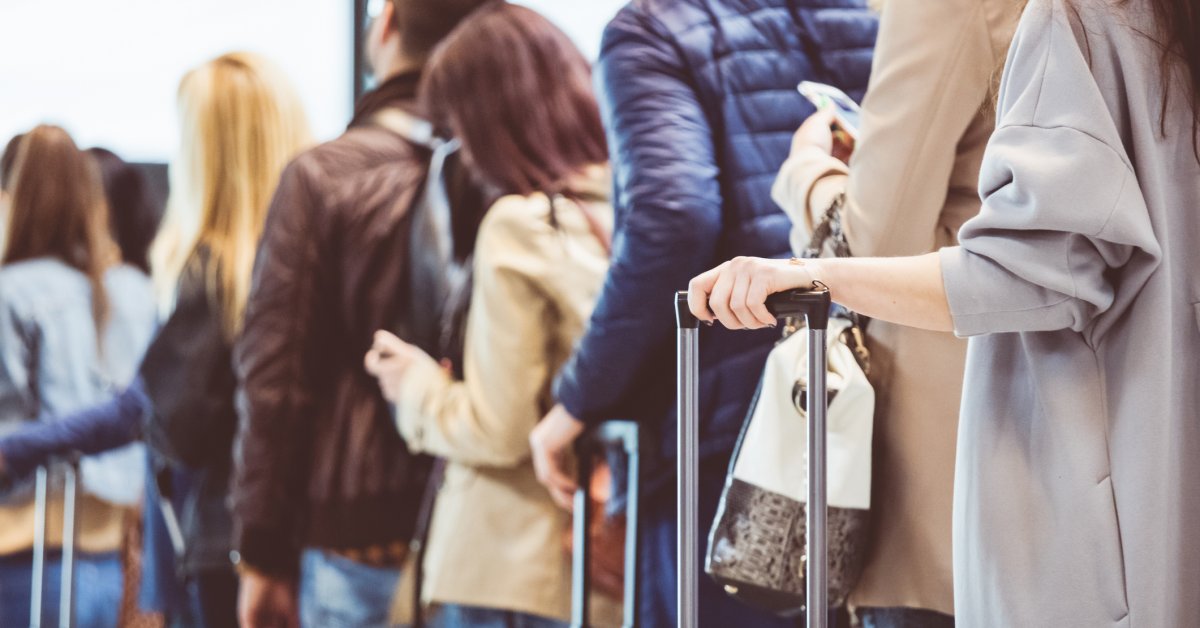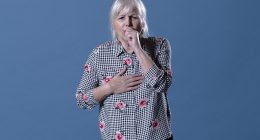
Health Officials Are Now Tracking COVID-19 Variants at Airports – Travelers are both the conduit and the canary in the coal mine for new COVID-19 variants, and U.S. health officials are trying to use those realities to keep ahead of variants coming into the country.
At four U.S. airports—John F. Kennedy in New York, Newark in New Jersey, San Francisco International, and Atlanta Hartsfield—the Centers for Disease Control and Prevention (CDC) is partnering with private companies XpressCheck and Concentric by Ginkgo to test incoming passengers for COVID-19. (Washington Dulles is expected to join the program in November.) The testing gives the CDC a heads up on which variants are entering the country and which new ones might be gaining ground and become a threat for the U.S.
Since the program began as a pilot in September 2021, about 12,000 to 15,000 passengers each week have agreed to get their noses swabbed at XpressCheck locations at the airports, and those samples have been pooled together and sent to Ginkgo’s technicians, who run PCR tests for SARS-CoV-2 and genetically sequence only those samples that are positive. When Ginkgo’s labs detect new changes to the virus, they alert the CDC and scientists keep a closer eye on changing trends in those mutations. The information is vital for CDC scientists, serving as an early detection system for detecting which new variants are entering the country and could present a threat in the future.
That’s how CDC scientists were first alerted to BA.3, which appeared in an airport sample on December 3,—the first such report in North America, 43 days before any other testing site—and BA.2, which showed up among passengers on December 14, seven days ahead of other reports. The program was also among the first to pick up other variants that are becoming important ones to watch this winter, including BA.2.75.2, XBB, and BQ.1.
At the end of August, Cindy Friedman, the CDC’s chief of traveler’s health received a call from a member of her team alerting her to a new mutation, eventually labeled BQ.1, which at the time was on the verge of quickly spreading in Europe. New mutations don’t necessarily mean a new variant that could either spread more easily or be more virulent, but it’s a heads up. The group reports all new mutations it finds to the public database on SARS-CoV-2 genes, GISAID, and the team’s report on BQ.1 was the first to identify the variant. CDC scientists then began learning more about its features to determine how it compared to previous variants when it came to virulence and transmissibility.
BQ.1 numbers began to rise, and as of the beginning of October, the variant accounted for about 17% of samples among travelers entering the U.S. suggesting that variant may become one to watch this winter. Those numbers are now part of the CDC’s COVID-19 Data Tracker, in a section devoted to genomic surveillance of travelers.
BQ.1 appeared in a single pooled sample—these pools typically include 10 to 25 swabs. Indeed, the goal of this project is not to test individual passengers and trace positive tests back to them, but rather to identify potential trends in the emergence and spread of variants. That means passengers who volunteer to get swabbed don’t need to provide personal information, just information on their flight, where it originated, and where they had traveled in the recent past. It also means that more people are willing to participate, which is essential for the CDC to get the data it needs to effectively track SARS-CoV-2.
As more people are testing at home for COVID-19, fewer are getting tested at hospitals, doctor’s offices, or clinics where the results are reported to health officials. So health authorities are no longer getting a clear picture of how many COVID-19 cases there are. That in turn means they are also losing their ability to keep ahead of SARS-CoV-2 variants—with fewer tests, experts have fewer genetic sequences of the virus, and a fuzzier view of how the virus is changing to evade immunity from vaccines and natural infections. “To understand what variants are emerging, we need testing,” says Friedman. “We need to fill in some of the gaps in surveillance, and travelers are coming from all over the world, so they are able to fill in the gaps and blind spots created by declining testing, reporting and sequencing.”
Currently the program includes about 150 flights each week at the four airports. The flights are chosen to represent different regions of the world in order to provide the broadest set of data available on how SARS-CoV-2 might be evolving, and includes 26 countries. Friedman hopes to expand that soon to 500 flights weekly. Because there is such variability in countries’ ability to test their populations, Friedman says the travelers’ program provides an additional benefit of providing valuable missing information on COVID-19 trends in countries where the data isn’t as robust. “This program is a good source of samples in the face of the global decline in testing. For countries that don’t have good data, they can look at our data, which is publicly available, and see what variants we’re finding,” says Friedman.
The program is completely voluntary. Early on, people who participated were offered free PCR testing kits and then rapid antigen self-testing kits, as an incentive to spend a few minutes getting their noses swabbed; now it relies on the altruism of passengers arriving from other countries to agree to stop for a few minutes and provide a sample. “You’d be surprised by the number of people who care about public health, and one they understand that it’s a public health tool, are willing to participate,” says Matt McKnight, chief commercial officer at Ginkgo Bioworks. At the airport, XpressCheck is responsible for recruiting and collecting the samples, and has strategically set up tables in areas where passengers are likely to wait such as after baggage claim, or in the Uber pickup areas. Ultimately, says Friedman, if the program continues to prove as successful as it has in identifying new variants early, such screening could become a routine part of immigration processing. That would be an ideal way to monitor for existing and new public health threats entering the country.
For now, the number of volunteers is generating enough data to prove the program worthwhile. But it won’t stop there. To supplement swabs from travelers, this summer Concentric began taking about 1 liter of wastewater from each long-haul international flight landing at JFK for testing as well. Wastewater surveillance has become a valuable tool in helping cities in the U.S. keep track of COVID-19 cases, as well as variants, and could also be a critical part of monitoring incoming pathogens on flights.
That’s the idea behind the travelers’ program—to eventually use it as a way to monitor the comings and goings of not only SARS-CoV-2 but other highly transmissible bugs as well, including influenza and any still-unidentified potential threats to public health. The Ginkgo team is also working with the State Department’s Defense Advanced Research Projects Agency to develop models for predicting the likelihood that the genetic sequences they analyze were engineered in a lab and did not arise in nature, as a way to raise red flags for possible biosecurity threats. “Like in cybersecurity, experts monitor for security threats persistently and pervasively, and look for anomalies,” says McKnight. “So why aren’t we catching public health threats sooner so we can develop interventions like vaccines sooner?”
Such programs could become a new line of defense against both natural- and man-made health threats. COVID-19 was the catalyst bringing together more sophisticated genetic sequencing tools with computational power “for pathogen detection that can be used as an early warning system for the detection of many other pathogens beyond SARS-CoV-2,” says Friedman. “Imagine if had had this platform stood up back in 2020, how wonderful that would have been. This is a path forward for being better prepared for the next outbreak or pandemic.”









